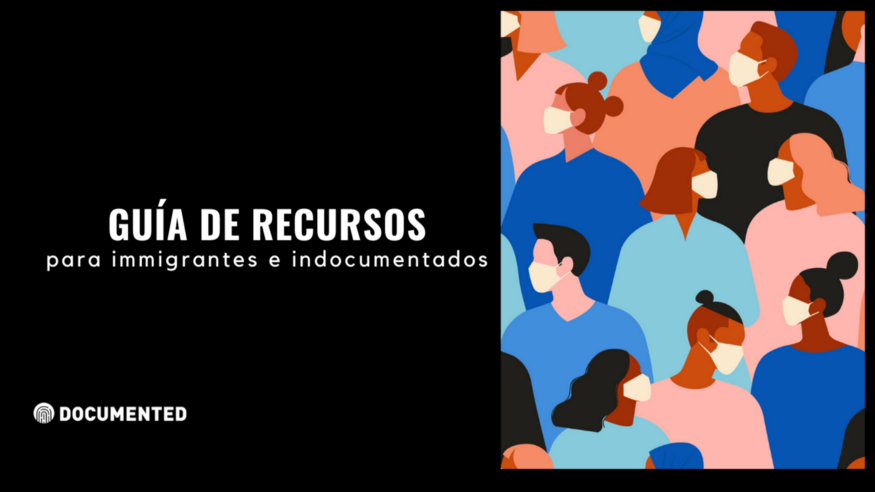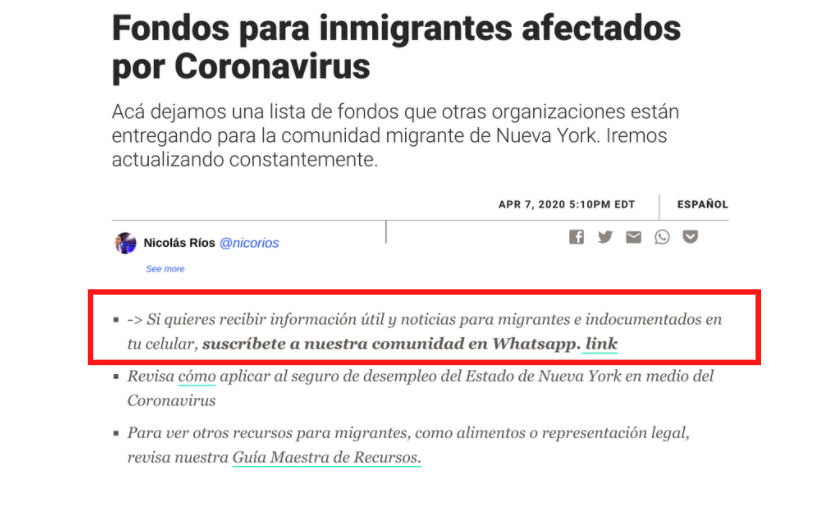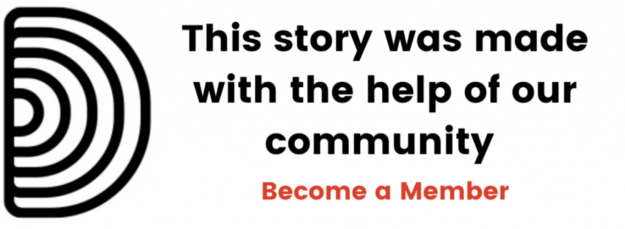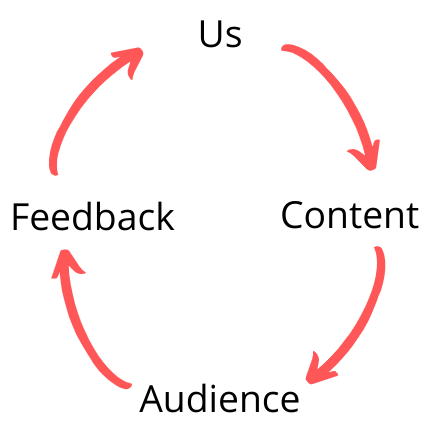Since the pandemic began, we have been sharing our process on how we created a community around our WhatsApp news service.
We embedded in a community to identify the pain points of a new audience for Documented. With that information, we shaped our product and became a rapid-response service when the pandemic started. You can read more on how we did that here.
Now we want to talk about how this strategy helped us grow our audience. We will do so by sharing some internal information that we think is worth unveiling.
(1) Our strategy helped our site analytics
We started our community on WhatsApp just as any other new product: with zero users. For a year, we counted on word-of-mouth user acquisition and our content creation model was the traditional top-down approach.

Basically, we told people what information was important, without asking for their input into our content creation process. This strategy gave us a slow flow of new users and little to no interaction, but it was also easy to implement.
Then the pandemic hit New York City and our users flocked to us with questions. So we adapted.

We started creating content based on what people shared with us on WhatsApp about their experiences during the pandemic. We also pushed call-outs with questions aimed at understanding our audiences better.
This circular audience-driven model brought us to our Guide of Resources in Spanish and English, a centralized place in which we store all the guides and explainers that we produce, based on the feedback we get from our community.
A year has passed since launching our guides. Here are some of the results:
- 205% increase in visitors, year over year
- 208% increase in unique page views, year over year
- 19.5% increase in average session duration, year over year
- -1.8% decrease in bounce rate, year over year
[Read more: Local newsrooms in the U.S. reimagine their beats to build engagement]
(2) Our evergreen content is now a major driver of new visits
Documented has three years of existence. We have a lot of old content that usually doesn’t attract new users after a couple of days of publishing.
Since the inception of our guides, the weight of the evergreen content in our monthly traffic has risen. In fact, in Q4 2020, 60% of our site visits was to content that we consider “evergreen.”
(3) More visitors to our site = more WhatsApp members
We already told you that we publish content based on our WhatsApp conversations. Well, that very same content helps bring even more users to our WhatsApp community.
So, we insert a CTA to join our WhatsApp community in every single article that is part of our guides in Spanish. For our content in English, we direct users to subscribe to our flagship newsletter, Early Arrival.

Meaning, the more people go to our articles, the more likely it is to have new WhatsApp members. Because of this, since the start of the pandemic, we grew our community by six times.
[Read more: A guide to using the WhatsApp Business API for audience engagement]
(4) Feedback from our users helped us make investigations that, at the same time, bring more users to our site
We speak with our WhatsApp community every day. We respond to their questions and try to analyze our conversations in the search for new stories. The following are some of the investigations we’ve published recently:
- Landlords Are Threatening Renters, Despite the Eviction Moratoriums
- ITIN Delays Are Keeping Undocumented Workers From Relief Funds
- Misinformation Is Harming Trust in the COVID Vaccine Among Latinos in New York
- The Cure for COVID-19 is a Hair Found in a Bible and Other Misinformation Fact-checked
- City Funding for Undocumented Immigrants is Shrouded in Secrecy
Together, these stories have brought thousands of users to our site, pushed our investigations to more word-of-mouth distribution of our WhatsApp community, and even got us more subscribers to Early Arrival.
All of these stories were born from conversations with our members on WhatsApp and they were also featured as sources. If you happen to come across one of these stories in the future, you will find this badge that shows off the help of our users and asks you to become a member:

(5) More users = more voices = more content.
Our users helped us create our Guide of Resources. Our guide made us visible on search. People found us and joined our WhatsApp product. We now see ourselves in a virtuous circle: Bigger community = more insights = more articles = bigger community.
Thanks to the thousands of new members that are now part of our WhatsApp community, we have been able to experiment by creating new content in written stories (see point 4). However, we have also experimented with different ways to give our audience a voice.
In previous posts, we mentioned our illustrations. Since then, we also experimented with audio, and now even film. All of these experiments have had either the input of our audiences or the voices of the members themselves.
One example that we are really proud of is our film. What originally started as a call out to make written content, the number of answers we received from users took us to make an audio special and then, to premiere I Know What Pandemic Means. The film features three members of our WhatsApp community who responded to our call out back in August as they describe their time through the start of the pandemic in 2020.
With more new voices seeing themselves portrayed in our journalism, we have improved engagement and trust, which in turn has even pushed for more word-of-mouth distribution.
Conclusion
In a year, we passed from a linear top-down strategy to a circular one:

The effects of this change have benefited not only our analytics, but also our journalism, and our organization in general.
In fact, thanks to this experience we sometimes look for feedback from our WhatsApp community before assigning stories to reporters. We have also made efforts to understand the needs of our email subscribers.
Hopefully, we will be able to serve more people by putting their needs first.
This article was originally published by Documented. It was republished on IJNet with permission.
Photo by Hannah Busing on Unsplash.

